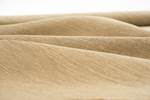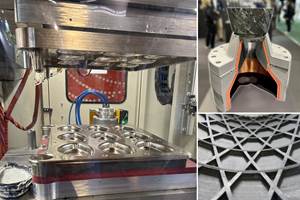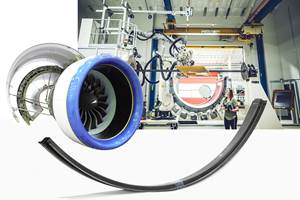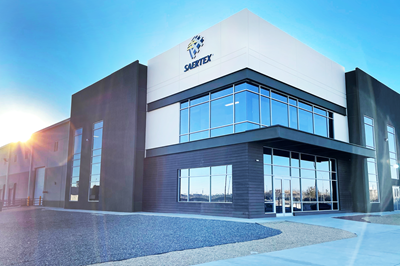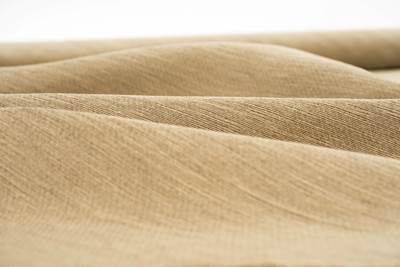Saertex expands global production network capacities for technical textile manufacture
Saertex reorganizes and invests in its 12 global facilities for producing multiaxial NCFs made of glass, carbon, aramid and natural fibers to supply wind power, mobility and industrial markets.
Photo Credit: Saertex
Saertex (Saerbeck, Germany) is undertaking a worldwide reorganization of its capacities for producing technical textiles made of glass and carbon fibers. Additional capacities for making lightweight carbon fiber fabrics are being created at two German sites within the company’s global production network. In parallel with this, the plant and corresponding machinery for producing glass fiber noncrimp fabrics (NCFs) will be installed at sites in India, South Africa and Turkey in order to adapt the company’s delivery performance to a change in regional demand.
Saertex is reorganizing its global network of production sites, which includes 12 plants on five continents, for producing multiaxial NCFs made of glass, carbon, aramid and natural fibers. According to the company, this is a building block on the road to expanding regional supply chains in order to ensure a stable product supply to wind power, mobility and industrial markets.
“We are investing in the efficiency of our worldwide production facilities to allow us to supply our customers economically and reliably via short distribution channels,” Christoph Geyer, CEO at Saertex, says. “This is how we are adapting our offer to a changing market landscape and making further progress towards achieving our global sustainability goals. We are achieving this on the basis of reducing transport distances by harnessing local delivery capabilities.”
The high demand for NCFs made of lightweight carbon fibers will be met by installing an additional MAX-5 plant for producing heavy-tow fabrics in Saerbeck.
Additional capacity is being added at the company’s headquarters in Saerbeck and at subsidiary TK Industries’ site in Selbitz (both in Germany) for producing multiaxial NCFs made of carbon fibers. At the same site, a new range of pultruded carbon fiber planks will enter series production. Preparations for this have almost been completed, the company reports.
“Saerbeck is not only an innovation center, but is also the most important and sustainable production site within the group. This is especially true when it comes to technology products in the carbon [fiber] sector,” Dietmar Möcke, CTO at Saertex, adds.
The high demand for NCFs made of lightweight carbon fibers will be met by installing an additional MAX-5 plant for producing heavy-tow fabrics in Saerbeck. “We are also implementing an additional production shift at the Selbitz site to create further capacity for this important part of our product range,” Möcke says.
In turn, production capacities for glass fiber fabric are being expanded at the company’s other sites, which operate internationally. The installation of additional multiaxial production machines at the Saertex plants in India, South Africa and Turkey, for example, have either already been completed or are in full swing. Construction of the new plant in Mexico has already been successfully completed in recent months, meaning that the Saertex site in Ciudad Juarez can now assume responsibility for supplying wind sector customers in Mexico.
“Despite considerable restrictions caused by the pandemic, we were still able to successfully conclude a key element of our global optimization measures,” Möcke concludes. “Depending on needs, we will also utilize the flexibility of our global production network over the longer term in order to adapt our local delivery performance to match demand from our customers.”
Related Content
Bladder-assisted compression molding derivative produces complex, autoclave-quality automotive parts
HP Composites’ AirPower technology enables high-rate CFRP roof production with 50% energy savings for the Maserati MC20.
Read MoreJEC World 2024 highlights: Thermoplastic composites, CMC and novel processes
CW senior technical editor Ginger Gardiner discusses some of the developments and demonstrators shown at the industry’s largest composites exhibition and conference.
Read MoreInfinite Composites: Type V tanks for space, hydrogen, automotive and more
After a decade of proving its linerless, weight-saving composite tanks with NASA and more than 30 aerospace companies, this CryoSphere pioneer is scaling for growth in commercial space and sustainable transportation on Earth.
Read MoreThe potential for thermoplastic composite nacelles
Collins Aerospace draws on global team, decades of experience to demonstrate large, curved AFP and welded structures for the next generation of aircraft.
Read MoreRead Next
Saertex opens production facility in Mexico for textile reinforcements
Saertex Mexico S.A. de C.V plant will begin production of multiaxial glass fiber noncrimp fabrics immediately, with goals to add production lines for expansion into wind power sector.
Read MoreSaertex enters into sustainable partnership with Terre de Lin for flax fibers
The Normandy-based supplier will enhance Saertex’s textile composite capabilities in markets such as marine and sports and leisure.
Read MoreUltrasonic welding for in-space manufacturing of CFRTP
Agile Ultrasonics and NASA trial robotic-compatible carbon fiber-reinforced thermoplastic ultrasonic welding technology for space structures.
Read More

